Sunflowers produce one of the brightest and biggest flowers during the growing season. As they charm us with their sun-facing blooms, they also produce a handful of seeds. Knowing when to harvest sunflower seeds is crucial to get them in their best condition.
In this post, we will share the different ways to identify if your sunflower seeds are ready to harvest.
We will also discuss how you can roast and store them to extend their shelf life during winter.
When To Harvest Sunflower Seeds?
Harvesting sunflowers require the perfect timing for you to achieve the best quality of seeds. Harvesting them too late can leave them with too dry and lumpy seeds. On the other hand, harvesting the seeds before they even fully mature will end up with too small seeds.
Another factor that may affect the longevity of sunflower seeds is their level of dryness right before you eat them or store them.
To catch the right timing to harvest your sunflower seeds, here are three signs you should look for:
Sign 1: The Flower Head is Drooping and The Petals Have Started To Dry and Fall Off
As the sunflower seeds are nearing their harvest time, the flowers will start to droop and bow.
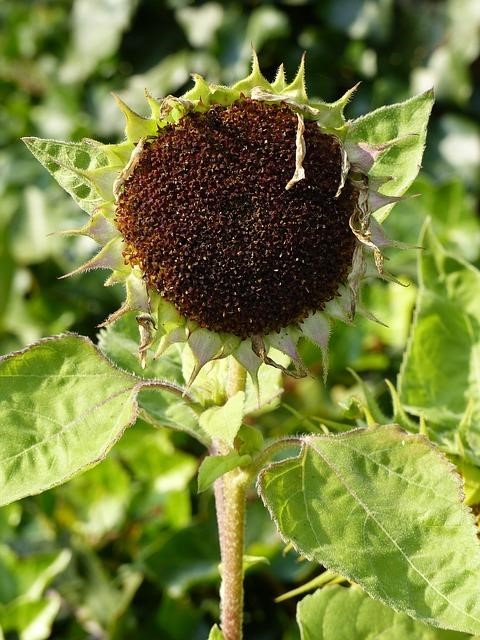
Compared to their usual behavior of following the sun, the flower heads will stay facing down. The petals will remain yellow and vibrant until the plant starts to put all of its energy into the seeds.
After the petals are done showing off their vibrant yellow color during spring and early summer, they will start to dry out and fall off. This is one of the first signs that your seeds are almost ready for harvest.
Pro tip: At this point, the competition between you, birds, squirrels, and other seed-eating animals will begin. To ensure that there are still seeds left for you to harvest, you can place a net or a paper bag over the sunflower heads. Check the image below as an example.
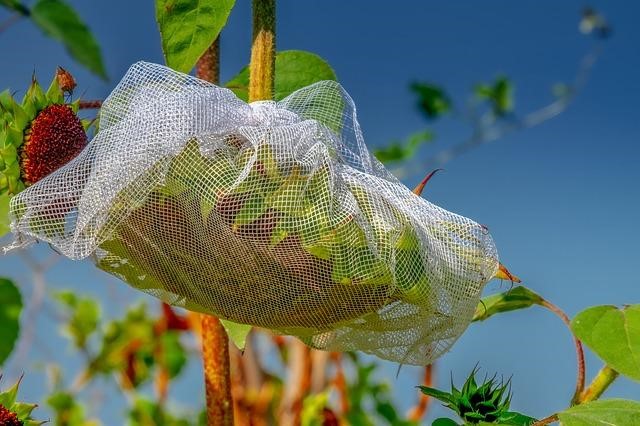
Sign 2: The Back of The Flower Head Starts To Dry Out
After a few days or a week, you may notice other signs that the sunflower seeds are developing well.
The back of the flower head is starting to turn yellow and brown which indicates that the plant is starting to stop sending nutrients and moisture to the calyx. The calyx is the green part that is attached to the stem and holds the other parts of the flower.
You may also notice that the seeds are starting to have black and white striping. In some cases, there are already some seeds that have dried and fallen off the ground. Both of which are good indications that in just a few days, you can harvest the seeds.
Sign 3: The Back of The Head Turns Dark Yellow To Brown
The sunflower seeds are ready to harvest when the back of the flower head has turned brown or dark yellow.
At this point, you have two options to dry your seeds. Either you let them dry out in the flower head or remove the sunflower seeds from the flower head and dry them in a separate pan.
If you choose to remove the seeds from the flower head, you can cut about 10 inches of the stem below the flower.
However, if you choose to dry the seeds in the flower head, you must cut the stem on its lower end so you can hang it indoors or on your porch.
Drying The Sunflower Seeds
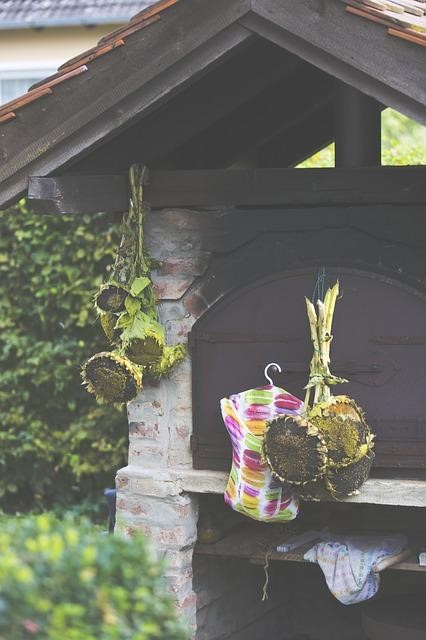
There are two ways in drying sunflower seeds which include retaining the flowerhead.
After cutting a long portion of the stem along with the flower, you need to hang them upside down and tie them all together with other flower heads.
Make sure that you hang the flower heads in a warm room with good air circulation like your porch or garage.
You can remove the seeds from the flower head as soon as the back of the flower turns brown and dry. The sunflower seeds will dry out around 2 to 3 weeks.
Another type of drying is more of a quick fix for your sunflower seeds. Remove the sunflower seeds from the flower heads and rinse off the other debris. Drain the excess water and place them in a baking pan to dry out overnight.
If you want an added flavor to your sunflower seeds, you may brine or soak them in saltwater overnight.
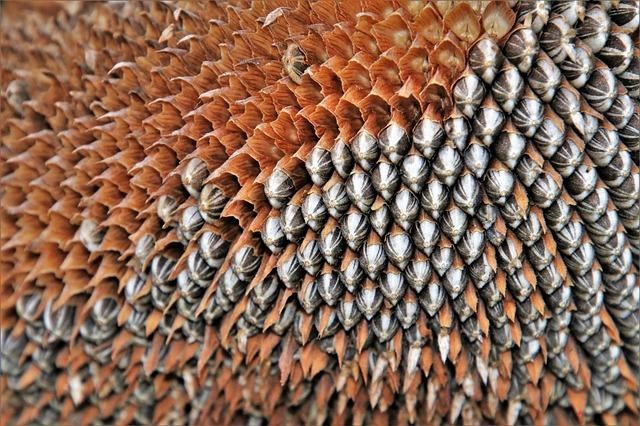
How To Store Sunflower Seeds?
The drier the sunflower seeds, the longer their shelf life becomes. Make sure to dry them thoroughly before storing them in your pantry to remove all of the moisture.
For immediate use, you can store sunflower seeds in your fridge or a cool and dark place. They can last for about 2 to 3 months. Make sure to place the date so you can track its spoilage. To prevent moisture buildup, you can place a silica gel inside the jar.
You can also place a separate batch of seeds for replanting for the next season. Label the variety name of the sunflower seeds in a container and place them in a cool dark place.
Freezing sunflower seeds is also an option to extend their shelf life for up to a year. Place a date on a freezer-safe container to track its expiration.
How To Roast Sunflower Seeds?
Who wouldn’t love that salty and rich taste of roasted sunflower seeds?
They are a perfect healthy snack for your kids and a work-from-home snack. Sunflower seeds give a handful of seeds that you can divide for your snacks and replanting for the next growing season.
Here are some roasting recipes for your newly harvested sunflower seeds:
Roasted Raw Sunflower Seeds
Some people love the raw texture of sunflower seeds. If you want to make the seeds more versatile, keep them raw so you can add them to your granola bar or breakfast bowls.
Here’s how:
- Rinse the sunflower seeds and remove other debris.
- Pat them dry and let them dry for a few hours.
- Place the dry seeds in a baking pan.
- Preheat the oven to 300 degrees Fahrenheit.
- Place the baking sheet in the midsection of the oven and cook it for 30 to 40 minutes.
- Once done, let them cool down and store in an airtight jar.
Traditional Salted and Roasted Sunflower Seeds With Shells
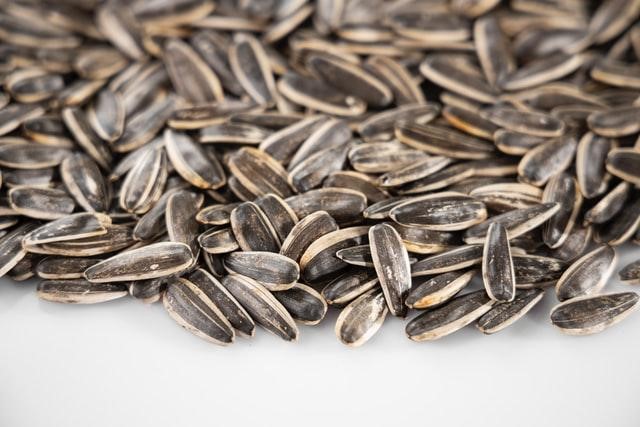
If you love that old roasted flavor of sunflower seeds, here’s how you can roast the raw ones:
Ingredients:
- 2 cups water
- ¼ cup salt
- Basin
- Baking sheet
Directions:
- Mix water and salt in a large bowl.
- Soak the rinsed sunflower seeds overnight.
- Drain the water and let the seeds dry for a few hours.
- Heat the oven for 300 degrees Fahrenheit and place the baking pan.
- Cooks the seeds for about 35 to 40 minutes until the shellac turns brown. Let them cool down before storing them in an airtight container.
Spicy Sunflower Seeds
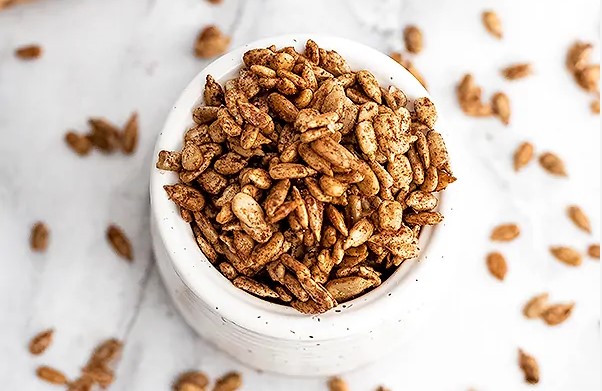
If you’re a fan of hot and spicy snacks, you can give your sunflower seeds some flavor twist.
Here’s how you can add some spice to your usual roasted seeds:
Disclaimer: This recipe is inspired by Bites of Wellness.
Ingredients:
- Sunflower seeds
- 2 tsp maple syrup
- 1 tsp pumpkin spice
- 1 tsp cinnamon
- 1 tbsp coconut or avocado oil
Directions:
- Remove the shells of your sunflower seeds and place them in a mixing bowl.
- Mix the dry ingredients such as pumpkin spice and cinnamon and add them to the sunflower seeds.
- Mix the wet ingredients such as maple syrup and coconut or avocado oil. Add the sunflower seeds and mix well.
- Put some coconut or avocado oil on the baking or cookie sheet placed in a baking pan.
- Place the sunflower seeds and layer them properly.
- Preheat the oven to 400 degrees Fahrenheit and place the pumpkin seeds for 5 minutes.
- Let the seeds cool down for 10 minutes before eating or storing. Spiced pumpkins can stay in your pantry for one to two weeks.
Old Bay Seasoned Sunflower Seeds
Another delicious version for your sunflower seeds is using an old bay spice. This recipe is inspired by Pepperscale.
Here’s how:
Ingredients:
- Raw sunflower seeds
- 1 cup water
- 1/2 cup Old Bay seasoning
Directions:
- Remove the shells of the sunflower seeds
- Preheat the oven to 300 degrees Fahrenheit.
- Place the sunflower seeds in 1 cup of water.
- Drain the water and mix the old bay spice. Mix it well to coat all of the sunflower seeds.
- Place the seeds in a baking pan and cook for about 30 minutes until golden brown.
- Let the seeds cool down for 5 to 10 minutes before eating or placing them in an airtight jar.
Getting To Know Your Bright Sunflowers
Sunflowers are among the easiest flowers to grow. They are not picky when it comes to their soil. They are an annual plant that is known for being a heliotropic or plants facing the sun.
The blooms take about 80 to 95 days to develop and can reach up to 16 feet high. The stems can grow thick and reach 12 inches in diameter.
Sunflowers are sun-loving plants. They require 6 to 8 hours of sun exposure every day. However, they need a lot of space to produce the big flower heads. Sunflower plants must have about 2 to 3 feet distance apart to resolve the competition in soil nutrients. The confection varieties are the ones that produce edible seeds.
They are classified into two types:
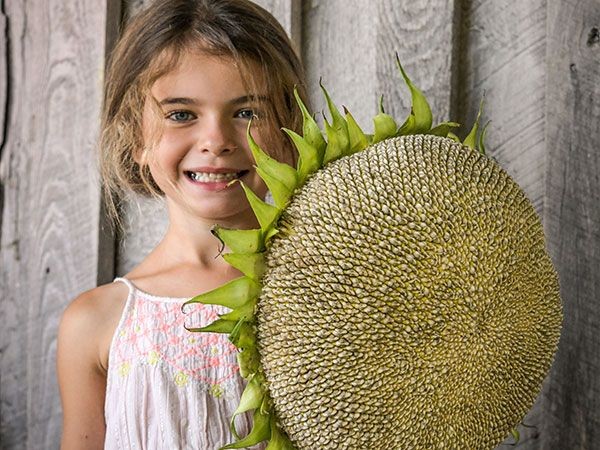
(1) Tall confection sunflower varieties: Produces the most seeds but at a smaller size. Varieties under this category include:
- Giganteus
- Mammoth Gray Stripe
- Mammoth Russian
- Titan
(2) Short confection sunflower varieties: Have fewer seeds but bigger seeds. These include:
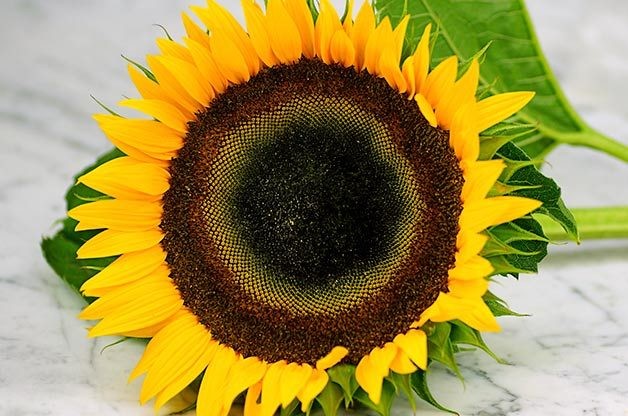
- Royal Hybrid
- Snack Seed
- Super Snack Mix
How To Plant a Sunflower?
When the time has come that you will use your harvested seeds to grow another batch of plants, you can plant as many sunflowers as you want, as long as you have the space.
Here are the planting requirements of sunflowers:
Sunflower Planting Requirements:
- Type of soil: Loose and nutrient-rich soil with compost.
- Soil area: 2 feet deep and 3 feet long.
- Water: 2 to 3 inches of water per week.
- Fertilization: slow-release fertilizer during planting.
- Pest control: Safety net during seed germination.
Planting Directions:
- Let the soil warm up before planting the seeds. Plant the seeds about 1 to 1.5 inches deep in the soil with 6 inches distance from each other. Each row should be 30 inches apart.
- You may add fertilizer during the planting stage to help boost their germination and root development.
- To prevent any birds or squirrels from unearthing the seeds, you may place a net over the planting site until the plants start to germinate.
- Water them with 3 to 4 inches of water every week.
Frequently Asked Questions (FAQs)
What month are sunflowers harvested?
Most sunflower seeds are harvested in the fall. They usually reach their full maturity by late August to September. After that, it will take another 2 to 3 weeks to let the seeds dry completely before storing or roasting.
When should I cut off my sunflower heads?
You should cut the sunflower heads when all of the petals have fallen off and the back of the sunflower head started to turn dark yellow and brown. These are indications that the seeds are already matured and ready for drying.
How long do sunflowers bloom?
Sunflowers take about 80 to 90 days to bloom. The flower may start to droop and dry out by the second week of August. From the last week of August to the first half of September, your sunflower seeds can be harvested as long as the flowerhead has dried well.
Final Thoughts
Sunflowers are both beautiful to look at and delicious to eat. They are easy to grow and a good addition to your blooming plants during spring and summer.
Their sunflower seeds are nutritious and a good source of calcium and protein promoting satiety and muscle growth. Plus, the seeds can be a healthier alternative to your usual Cheetos especially when you are trying to lose weight.
We hope that this post gave you all the information you need on when to harvest sunflower seeds. Please don’t forget to share this post with your friends who are also growing sunflowers.
Let us know in the comments how many sunflower seeds you harvested this growing season!
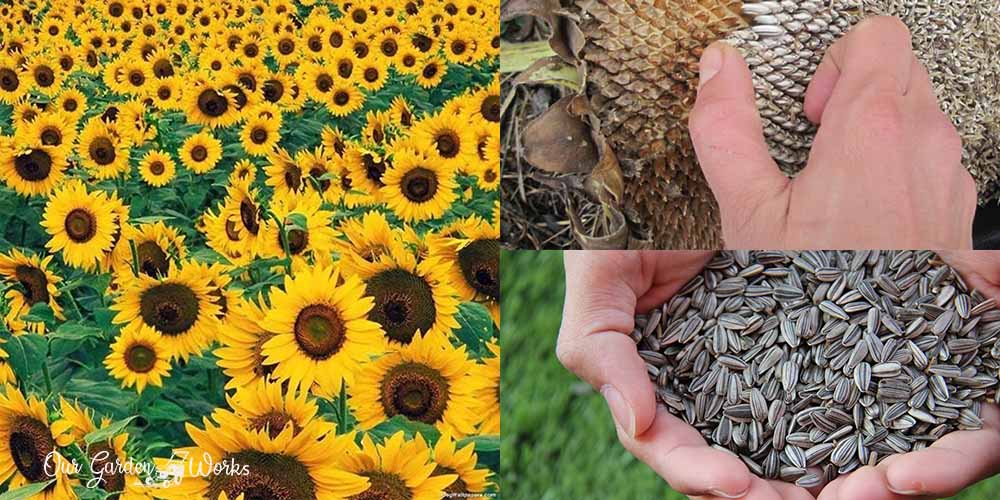
Very thorough study and explained very well. Easy to understand. Thank you
Thanks Donna!